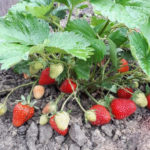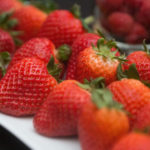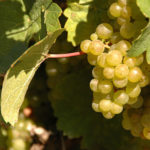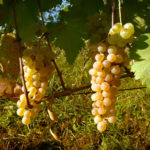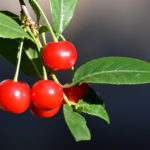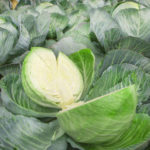Strawberry variety Florence (Florence)
Florence is a non-repairable variety of garden strawberries (strawberries) of late ripening, one-time fruiting, universal use. It was bred in 1977 at the experimental station of the East Malling Institute in Great Britain, the author is D. W. Simpson. The pedigree of our hero includes such varieties as Tioga, Gorella, Providence, Redgauntlet, Wiltguard. Strawberries are valued for their large fruit, high yield, resistance to various diseases, excellent taste of berries and their excellent presentation. It is actively grown by farmers and summer residents in Europe, Russia, Ukraine and Belarus, and is popular in some other areas of the world.
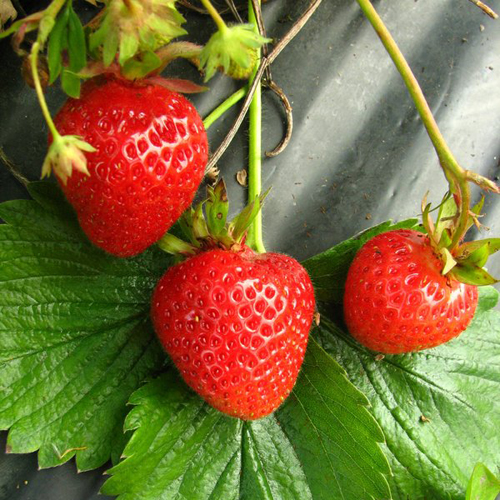
The plant is tall, powerful, abundantly leafy, the bushes take a spherical shape. A lot of whiskers and horns are formed, although the adaptive ability decreases as the strawberries “mature”. The leaves of the variety are large, slightly corrugated, dark green in color. The flowers are white, are formed in large quantities, many fruits are tied. Peduncles are long and very thick, powerful, strong, located above the level of the leaves, under the weight of numerous large berries, they lie on the ground.
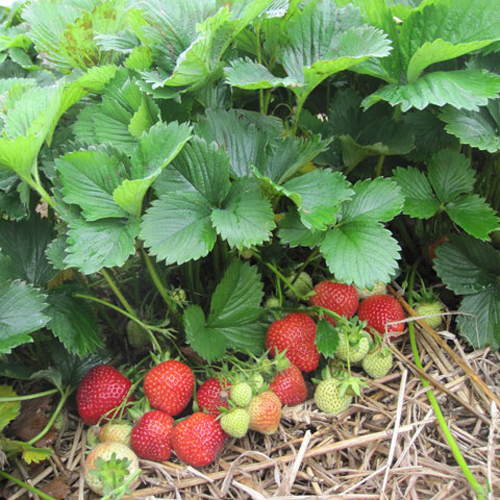
Florence's fruits are very large, have a regular wide-conical shape, the largest specimens are rounded-conical. The peel has an intense red color, at the stage of full maturity it acquires a pronounced maroon hue. Achenes are yellow, occur at medium depth. The flesh is red in color, rather dense, but not firm, without crunch on the bite, very juicy, with a magnificent bright aroma of wild strawberries. It should be noted that the berries of this variety are distinguished by uniformity of shapes, due to which they attract the attention of buyers in the market.

Strawberry tastes great! The fruits are very sweet, but not sugary, with a bright, graceful acidity, giving the palate a spicy zest. According to gardeners' reviews, Florence berries are really very tasty, and, coupled with a great aroma and suitability for transport, make our hero a favorite for sale on the market. By the way, one of the advantages of the variety is that even in rainy or dry seasons, the taste does not deteriorate. The fruits are versatile in use, especially excellent fresh, suitable for processing and canning, and are also suitable for freezing.
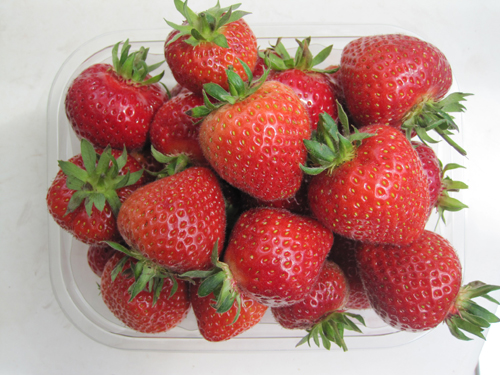
The berries of the variety are really large, the average weight per season is 30-40 grams, specimens weighing 60 grams are not uncommon, and sometimes "giants" of more than 100 grams are formed. In terms of fruit size, our hero bypasses the reference variety Elsanta, and in terms of the percentage of marketable berries, it is also ahead of it. There are very few substandard specimens, which will especially delight farmers, the yield of marketable products is very high. Florence's yield is really high, it is quite possible to collect about 1 kg of fruit from one plant and even more. With moderate agricultural practices, without strict control over the growing conditions and abundant fertilizing, the indicator is slightly less - from 500 to 700 grams per bush. It is worth saying, however, that strawberries do have enormous potential, so the amount of harvest depends more on how much effort you put into growing.
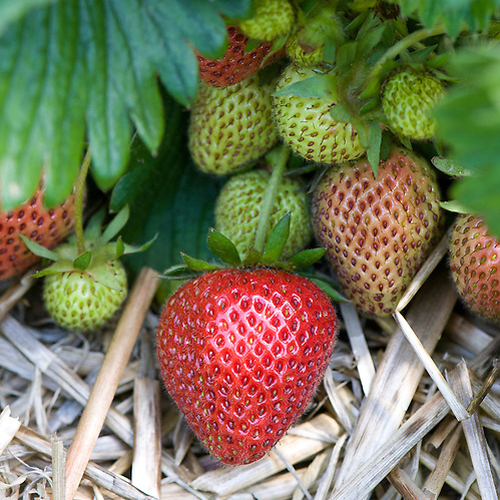
The variety ripens at a later date, but, depending on the weather conditions of the season, it can begin to bear fruit both earlier and a little later. In Great Britain, for example, Florence ripens 7-10 days later than Elsanta. On average, the start of fruiting occurs in early to mid-July. The variety is excellent for commercial cultivation as an extension of the berry turnover. When the early and mid-ripening varieties are already finishing fruiting, our hero only "starts to taste." Strawberries quickly give up the entire crop, which is very convenient - the collection takes place in a short time, in one or two times.By the way, picking berries is easy and pleasant - thanks to the long peduncles, they are perfectly visible, besides, they ripen quite amicably. And one more attractive point - even at the stage of technical ripeness, the fruits have a great taste.
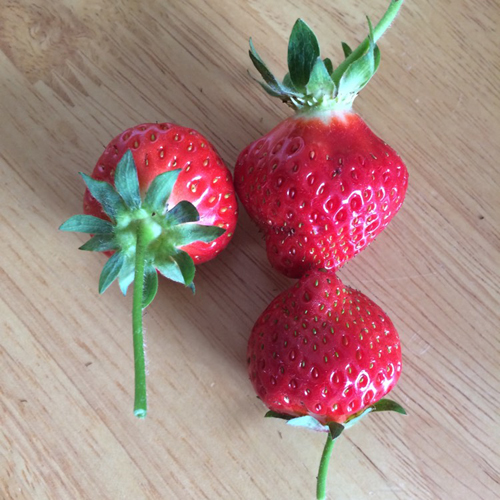
Florence can boast of excellent immunity, it is resistant to various viral and fungal diseases, it is very rarely affected by diseases of the root system, it is a little more susceptible to spotting, but not critical. According to some reports, plants are moderately resistant to verticillary wilt, but they are not affected more often than other varieties. Thus, under favorable conditions, the variety can be grown without the use of chemicals, so it can be safely called suitable for organic farming. On the other hand, in the rainy seasons, the vulnerability to fungal diseases increases, the berries can rot, so it is better not to forget about timely preventive measures.
In general, strawberries endure various weather disasters, but high-quality care will greatly affect its health and productivity. The winter hardiness of the variety is average, it is highly desirable to provide planting with good shelter in the winter. As for frost resistance, there are two points. Firstly, Florence blooms late, so spring frosts are not terrible for flowers, but the plants themselves can suffer with strong temperature changes, so it is better to take care of the covering material. Secondly, since the variety is late, in the northern regions it may simply not have time to give the harvest before the cold snap. The solution to the problem is still the same - the use of covering materials.
Strawberries have good drought resistance, however, in the absence of moisture, the yield decreases markedly, so do not neglect regular watering. In general, the best solution would be to install a drip irrigation system. This will help maintain an optimal moisture balance in the soil, which in turn will have a very positive effect on the quantity and quality of the crop. Heat resistance in plants is rather weak, shading is highly desirable. On the other hand, the berries are not baked in the sun, and if well watered, the heat will not affect the yield in any way. But still it is worth saying that Florence is zoned for the rather mild climate of England, where very high temperatures are extremely rare, so just in case you should play it safe and protect the plantation from the harmful effects of heat. As already mentioned, the taste of berries does not deteriorate even in rainy seasons, however, waterlogging can threaten an increased risk of diseases, especially fungal ones, so this nuance must also be monitored.
One of the advantages of the variety is its undemandingness to the soil. It can grow on almost all types of soil, however, it is important that they are fertile. So, before planting strawberries, the required amount of organic and mineral fertilizers is mandatory in the soil. In general, in terms of fertilizing, the scheme is quite simple - the better you “feed” the plants, the more harvest you can expect. Florence belongs to the group of commercial varieties, therefore, the disclosure of its potential is highly dependent on the intensity of agricultural technology. By the way, our hero shows the best results when grown indoors, the yield in this case can exceed the mark of 1 kg per bush.
In principle, strawberries are quite easy to care for, but they have several features that should not be neglected. First, plants react extremely negatively to thickening. The minimum distance between the bushes should be 35 cm, if possible, they should be planted more freely.So, the optimal planting density is 3 plants per 1 square meter of area. The second important point, which we have already talked about, is that the variety is picky about watering, but does not like waterlogging. And the main nuance is the need for high-quality plentiful nutrition.
Concerning Florence's longevity, opinions differ. So, some say that strawberries bear fruit consistently for 5 years, others say that the deadline for growing is 3 years. It should be noted that it is still more advisable to use plants for no more than 3-4 years, and then renew the plantings in order to avoid a decrease in yield and a deterioration in taste. If we talk about commercial cultivation, then the optimal solution would be to use the variety in a two-year culture, a maximum of a three-year one, but no more. Every year the immunity of plants is weakening, and the cost of preventive treatments does not really pay off. In general, you can learn from the experience of European farmers - they practice growing strawberries in a one-year culture. On the other hand, Florence allows for an extension of up to two years, which beats other varieties. In a word, try different schemes, and you will definitely find the best one, suitable specifically for your conditions.
It is worth making one small remark. Due to translation difficulties, there was a slight confusion with the name of the variety. Its original and officially registered name is Florence, which in Russian sounds like "Florence". Many sources, including Polish ones, decided to translate literally, which is why you can often find strawberries on the market both under the name Florence and Florence. In fact, they are one and the same variety.
What can you say at the end? This strawberry is really very good not only for a simple gardener, but also very promising for farmers and large agricultural firms. It has all the necessary qualities to proudly bear the title of "commercial variety", and in addition is famous for its excellent berry taste, which makes it very attractive for summer residents. Of the minuses - the exactingness to high-quality plentiful nutrition, and in general a relatively high whimsical care. On the other hand, Florence is by no means a sissy - currently the market is full of varieties and whims. In a word, feel free to try to settle our hero on your site, he obviously will not disappoint you!
